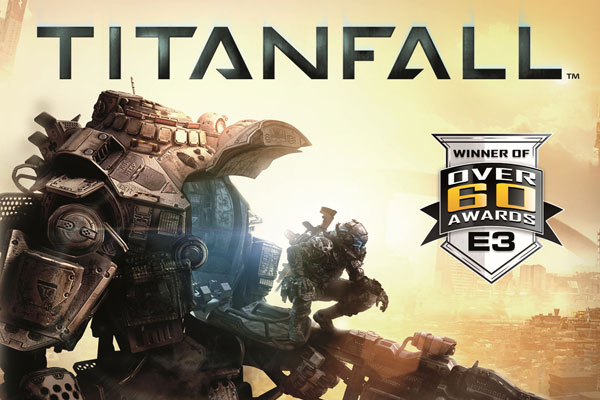TitanFall
Developed by Respawn | Published by EA | XBox One, PC
We are living in the Multiplayer era. Five years ago it was the MMORPG that was dominating the gaming landscape and the conversations of gamers. Now, however, it is time for the First Person Shooter (FPS) Multiplayer to shine. The last couple of years have been exciting with the Battlefield franchise challenging the reigning champion Call of Duty for the title. However, a multitude of problems such as network issues, the repetitious grind of yearly instalments and the undeniable degradation of these games’ single player campaigns has left players feeling dissatisfied with the current climate of the Online FPS genre. The real trouble here is that the players of this genre want something new and refreshing, with the debilitating addendum that this new thing cannot stray too far from what already exists. The solution to this problem turned out to be Vince Zampella and Jason West. These two men created Call of Duty and were responsible for its development, until Activision forcibly dismissed them for “breaches of contract and insubordination.” However, this dismissal was fought tooth and nail by West and Zampella through a legal battle that left a bad taste in the mouth of all involved. Finally West and Zampella found refuge with EA, starting their new company Respawn Entertainment, and beginning the development of their new game that would challenge the current FPS scene. That game is Titanfall.
Titanfall is exactly what the FPS genre needs right now, an online-only competitive first person shooter that combines the elements of what FPS fans love about current titles, while introducing a sizable amount of innovation. The games are your classic two-sided affair, the two sides being the IMC and the Militia, with six players in each team. The familiar aspect is that players begin matches as foot soldiers called Pilots. These Pilots are equipped with your usual arsenal of weapons (rifles, shotguns, sniper rifles) as they hunt down members of the opposite side or attempt to achieve objectives. Though this premise is familiar there are some key differences about these Pilots. They are far more agile than any other first person shooter soldier. Pilots have the capability to traverse the map both vertically as well as horizontally with a number of parkour and jetpack options that make movement a lithe and graceful dream. Another key difference is that the map is also occupied with NPC characters as well, which, though useless as fighters, allow less experienced players to still contribute to the success of a match even if they can’t kill other players by killing these bots instead.
Despite these innovations, the real key to Titanfall’s success is the inclusion of the Titans themselves. After a period of time, which decreases depending on how well you’re fighting, you get the option to call in Titanfall. This glorious moment lets you mark the map with a landing point and then watch as your own personal Mech warrior launches from space and lands with a world shaking impact at your feet. You then climb inside of this metal god, equipped with a whole new arsenal of weapons, including rockets and chainguns, and are free to inflict carnage upon all unlucky enough to cross your path. That is until you encounter another Titan, at which point a skirmish begins that, unlike Pilot battles, rely much more on strategy than twitch shooting skills.
This whole new FPS paradigm takes place on a range of 15 diverse and superbly designed maps, and using five different game types: Attrition, which is your classic Team Deathmatch; Hardpoint, which is similar to other titles’ Domination modes; Capture the Flag; Last Titan Standing, which has every player start in a titan and offers no respawns; and Pilot Hunter, a game type that offers points only for killing other pilots and not for destroying titans or killing NPCs.
The game’s greatest feat is that, despite the innovations, wide range of different play styles, maps and game types, the game is superbly balanced, combining all of these elements together into a sleek and polished experience that is different and exciting during every moment of play.
The game’s biggest weakness is its campaign mode. Though Titanfall has no single player campaign, like most FPS’s, it instead includes a Multiplayer Campaign mode. This mode includes nine matches that are first played through as the Militia, and then upon completion can be played as the opposite side, the IMC. These nine matches are a mixture of Attrition and Hardpoint on a number of maps and play out just as a regular match except that while you play there is a narrative that is delivered through voice-overs. Though this emphasis on world building offers a new layer of tension to the matches, it is not possible to concentrate on the story as well as your fighting and so the story is lost. Still, it is an interesting experiment that, despite its poor execution in this game, has potential for future iterations.
Titanfall is the future of FPS titles. It shows that the core experience of twitch shooters can be retained while still offering innovative and fresh experiences.




